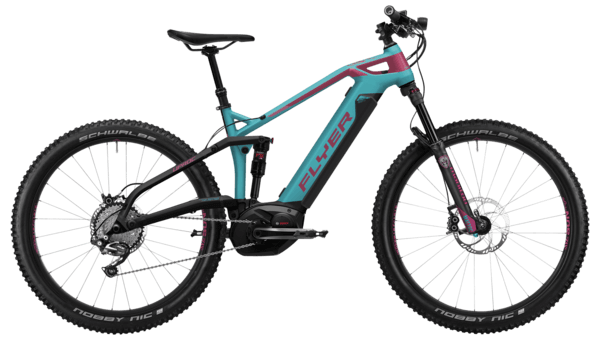
-
 Afrikaans
Afrikaans -
 Albanian
Albanian -
 Amharic
Amharic -
 Arabic
Arabic -
 Armenian
Armenian -
 Azerbaijani
Azerbaijani -
 Basque
Basque -
 Belarusian
Belarusian -
 Bengali
Bengali -
 Bosnian
Bosnian -
 Bulgarian
Bulgarian -
 Catalan
Catalan -
 Cebuano
Cebuano -
 Corsican
Corsican -
 Croatian
Croatian -
 Czech
Czech -
 Danish
Danish -
 Dutch
Dutch -
 English
English -
 Esperanto
Esperanto -
 Estonian
Estonian -
 Finnish
Finnish -
 French
French -
 Frisian
Frisian -
 Galician
Galician -
 Georgian
Georgian -
 German
German -
 Greek
Greek -
 Gujarati
Gujarati -
 Haitian Creole
Haitian Creole -
 hausa
hausa -
 hawaiian
hawaiian -
 Hebrew
Hebrew -
 Hindi
Hindi -
 Miao
Miao -
 Hungarian
Hungarian -
 Icelandic
Icelandic -
 igbo
igbo -
 Indonesian
Indonesian -
 irish
irish -
 Italian
Italian -
 Japanese
Japanese -
 Javanese
Javanese -
 Kannada
Kannada -
 kazakh
kazakh -
 Khmer
Khmer -
 Rwandese
Rwandese -
 Korean
Korean -
 Kurdish
Kurdish -
 Kyrgyz
Kyrgyz -
 Lao
Lao -
 Latin
Latin -
 Latvian
Latvian -
 Lithuanian
Lithuanian -
 Luxembourgish
Luxembourgish -
 Macedonian
Macedonian -
 Malgashi
Malgashi -
 Malay
Malay -
 Malayalam
Malayalam -
 Maltese
Maltese -
 Maori
Maori -
 Marathi
Marathi -
 Mongolian
Mongolian -
 Myanmar
Myanmar -
 Nepali
Nepali -
 Norwegian
Norwegian -
 Norwegian
Norwegian -
 Occitan
Occitan -
 Pashto
Pashto -
 Persian
Persian -
 Polish
Polish -
 Portuguese
Portuguese -
 Punjabi
Punjabi -
 Romanian
Romanian -
 Russian
Russian -
 Samoan
Samoan -
 Scottish Gaelic
Scottish Gaelic -
 Serbian
Serbian -
 Sesotho
Sesotho -
 Shona
Shona -
 Sindhi
Sindhi -
 Sinhala
Sinhala -
 Slovak
Slovak -
 Slovenian
Slovenian -
 Somali
Somali -
 Spanish
Spanish -
 Sundanese
Sundanese -
 Swahili
Swahili -
 Swedish
Swedish -
 Tagalog
Tagalog -
 Tajik
Tajik -
 Tamil
Tamil -
 Tatar
Tatar -
 Telugu
Telugu -
 Thai
Thai -
 Turkish
Turkish -
 Turkmen
Turkmen -
 Ukrainian
Ukrainian -
 Urdu
Urdu -
 Uighur
Uighur -
 Uzbek
Uzbek -
 Vietnamese
Vietnamese -
 Welsh
Welsh -
 Bantu
Bantu -
 Yiddish
Yiddish -
 Yoruba
Yoruba -
 Zulu
Zulu
High Precision CNC Thread Rolling Machines for Enhanced Manufacturing Efficiency and Quality Control Solutions
Understanding CNC Thread Rolling Machines A Comprehensive Overview
CNC (Computer Numerical Control) thread rolling machines have revolutionized the manufacturing industry by providing precision, efficiency, and versatility. These machines are specifically designed for producing high-quality threads on various materials, allowing for enhanced performance in applications ranging from automotive to aerospace.
What is CNC Thread Rolling?
Thread rolling is a cold forming process that involves the use of hardened steel dies to create threads on a workpiece without removing material. This method is favored over traditional cutting threads due to several advantages, including superior strength, better surface finish, and increased dimensional precision. CNC technology further enhances the process by automating the machine's operations, allowing for higher production rates and reduced human error.
Key Components of CNC Thread Rolling Machines
CNC thread rolling machines consist of several critical components that work in tandem to achieve the desired results. Key elements include
1. Rolling Dies These are specially designed to shape the material through pressure, creating threads with high accuracy. The choice of die is crucial as it determines the thread profile and depth.
2. Workholding Devices Effective clamping systems are essential to securely hold the workpiece during the rolling process. Proper workholding minimizes vibrations and movement, which can adversely affect thread quality.
3. CNC Control System The heart of any CNC machine, the control system governs the machine's actions based on programmed specifications. It allows for precise adjustments in speed, pressure, and travel, ensuring consistent thread characteristics over large production runs.
4. Hydraulic Systems Many CNC thread rolling machines utilize hydraulic systems to provide the necessary force for rolling. Hydraulic power improves efficiency and can be finely controlled, resulting in better thread quality.
5. Cooling Systems Although thread rolling is a cold process, cooling systems are often integrated to dissipate heat generated from friction, maintaining optimal operating conditions and prolonging die life.
Advantages of Using CNC Thread Rolling Machines
cnc thread rolling machine

The benefits of CNC thread rolling machines are manifold
- Precision and Accuracy CNC technology ensures high dimensional accuracy, making it ideal for parts that require exact specifications.
- Enhanced Strength The cold forming process produces stronger threads compared to traditional cutting, resulting in superior fatigue resistance and durability.
- Cost Efficiency By reducing material waste and increasing production speeds, CNC thread rolling machines contribute to lower manufacturing costs.
- Versatility These machines can accommodate various materials, including metals and plastics, and can produce different thread types and sizes, making them suitable for a broad range of applications.
Applications of CNC Thread Rolling Machines
CNC thread rolling machines are utilized across various industries due to their effectiveness in thread production. Key applications include
- Automotive Industry Used for manufacturing bolts, screws, and fasteners that require high strength and reliability.
- Aerospace Critical for producing components that demand strict adherence to safety and performance standards.
- Manufacturing Widely used for creating threaded parts in machinery and equipment, ensuring seamless assembly and functionality.
Conclusion
CNC thread rolling machines represent a significant advancement in production technology. Their ability to produce strong, accurate threads efficiently makes them invaluable in modern manufacturing. As industries continue to prioritize quality and efficiency, the role of CNC thread rolling machines is set to grow, leading to innovations that will redefine threading processes for the future. By understanding and leveraging the capabilities of these machines, manufacturers can achieve greater competitiveness and meet the ever-increasing demands of their customers.
